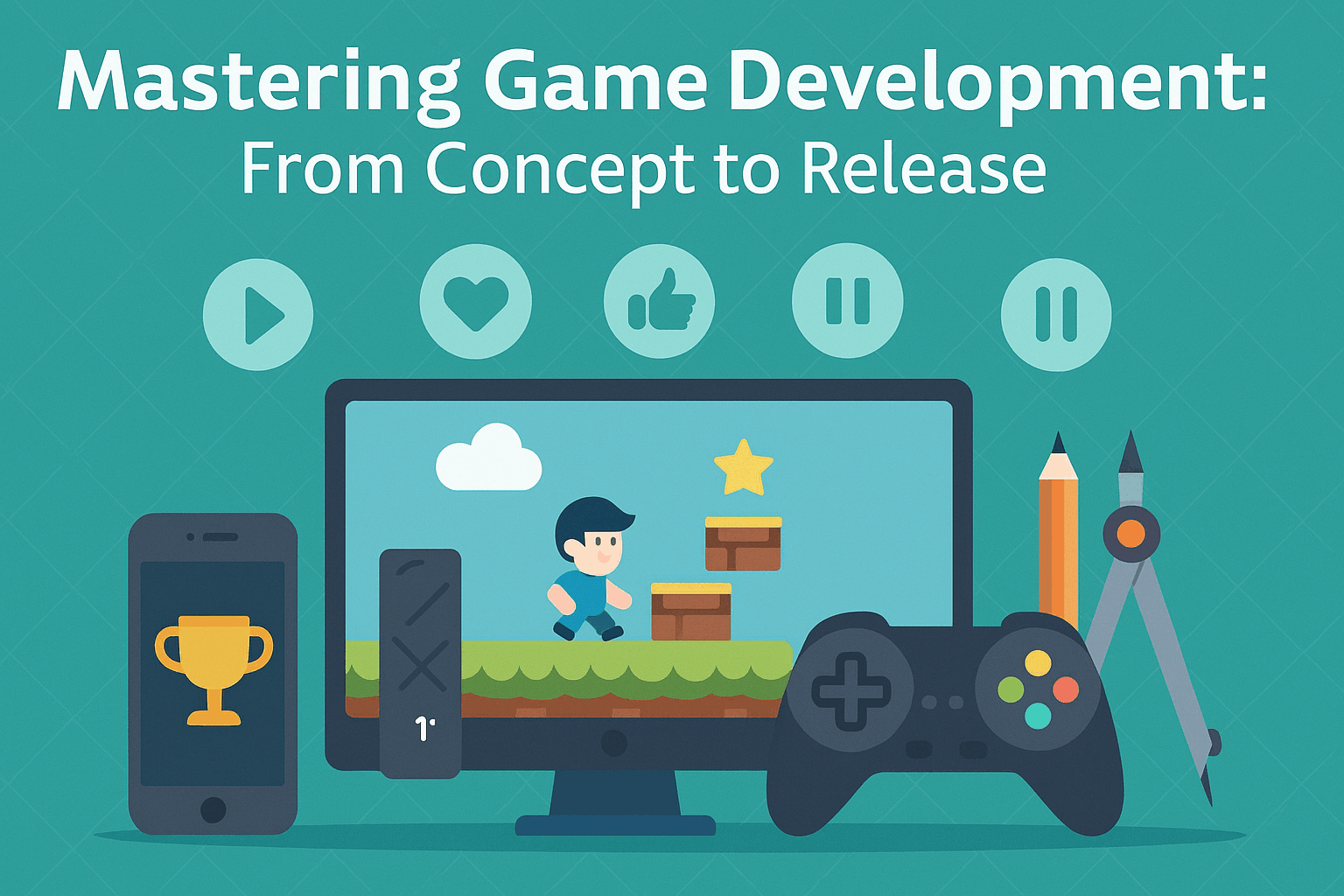Mastering Game Development: From Concept to Release

Table of Contents
Game development is an intricate journey that transforms creative ideas into interactive digital experiences. From brainstorming mechanics and narrative to implementing complex programming and polishing visuals, the process demands both technical expertise and artistic vision. Whether you are an indie developer with a small team or a large studio aiming for AAA quality, understanding the lifecycle of game development is essential to deliver engaging and successful titles.
The journey often begins with ideation—where a simple concept evolves into a structured plan. Here, developers define the game’s core mechanics, genre, target audience, and monetization strategy. During this stage, research plays a crucial role. Developers analyze market trends, study player preferences, and identify gaps in the industry. Many studios also consider collaborating with specialized partners to enhance their capabilities. Outsourcing certain aspects of development, such as art, sound, or quality assurance, has become increasingly popular. For those exploring options, resources like https://www.linkedin.com/pulse/best-game-development-outsourcing-companies-2026-industry-observer-tzige/ provide valuable insights into reputable outsourcing companies, helping studios make informed decisions without compromising on quality or deadlines. This approach allows teams to focus on their core strengths while benefiting from external expertise.
Conceptualization and Prototyping
Once a clear concept is in place, the next phase is prototyping. Prototypes are simple versions of the game used to test mechanics, controls, and overall player experience. This stage allows developers to experiment with ideas without committing to full-scale production. Iterative prototyping helps identify flaws early, saving time and resources later in development. For example, a platformer prototype might initially test basic character movement, jump physics, and collision detection before investing in full art assets or complex level design.
Tools like Unity, Unreal Engine, and Godot are widely used for rapid prototyping due to their flexibility, extensive libraries, and active communities. Designers often create storyboards or wireframes to visualize gameplay flow, ensuring alignment between vision and execution. Early player testing can also provide critical feedback, revealing how intuitive the mechanics are and whether the core gameplay loop is enjoyable. At this stage, it is essential to maintain flexibility, as concepts may evolve significantly before final production.
Production and Development
The production phase is where the bulk of the work happens. Programmers, artists, designers, and sound engineers collaborate to bring the prototype to life. Code implementation, asset creation, animation, sound design, and level development all converge to build the playable game. Effective project management is crucial here, often utilizing agile methodologies to ensure smooth workflow, frequent testing, and incremental progress.
Art and animation teams focus on creating visually appealing assets, from character models to environmental textures, while programmers work on mechanics, physics, AI behavior, and networking. Sound engineers and composers enhance immersion with music, sound effects, and voice acting. Game development outsourcing can also play a significant role during production, especially for tasks that require specialized skills, such as 3D modeling, cinematic cutscenes, or multiplayer networking. Strategic outsourcing helps studios scale efficiently while maintaining high standards, enabling smaller teams to achieve results comparable to larger studios.
Moreover, clear communication and documentation are vital to avoid misunderstandings between internal teams and external partners. Tools such as Trello, Jira, and Slack streamline collaboration, while regular progress reviews ensure alignment with the project’s vision. By combining in-house expertise with outsourced services, developers can optimize both quality and efficiency.
Testing and Quality Assurance
No game can succeed without rigorous testing. Quality assurance (QA) is essential to identify bugs, glitches, and gameplay imbalances. Testers play through different scenarios to ensure the game performs well across platforms and meets user expectations. Beta testing, both closed and open, is a common practice to gather real-world feedback from players. Proper QA not only improves stability but also enhances the overall user experience, minimizing negative reviews and increasing retention rates.
Automation tools are increasingly used alongside manual testing to ensure repetitive tasks, like checking level transitions or loading sequences, are consistently verified. Outsourcing QA can provide access to larger testing pools and professional teams, ensuring more comprehensive coverage than in-house testing alone. Additionally, localization testing is crucial for games targeting global markets, verifying that translations, cultural references, and regional regulations are accurately implemented. A thorough QA process ensures that the final product feels polished and professional, increasing its chances of commercial success.
Launch and Post-Release Strategy
Releasing a game is just the beginning. Marketing, community engagement, and post-launch support are critical to a game’s long-term success. Developers often release updates, patches, and downloadable content (DLC) to maintain player interest and address any issues. Platforms like Steam, Epic Games Store, PlayStation Network, Xbox Live, and mobile app stores provide distribution channels, but effective promotion is essential to stand out in a crowded market. Engaging with players through social media, streaming platforms, and community forums fosters loyalty and generates valuable feedback.
Live operations, such as seasonal events, limited-time challenges, and in-game rewards, can significantly boost player retention and revenue. Strategic partnerships, including outsourcing marketing, live operations, or customer support, allow studios to scale their efforts without overwhelming internal teams. By continuously monitoring analytics, developers can identify trends in player behavior and adjust gameplay, content, and monetization strategies accordingly.
In conclusion, mastering game development requires a blend of creativity, technical expertise, and strategic planning. From conceptualization to post-release support, every stage presents unique challenges and opportunities. Collaborating with skilled teams, whether in-house or outsourced, ensures that a game not only meets its initial vision but also delivers a polished, enjoyable experience for players worldwide. Embracing modern tools, efficient workflows, and strategic partnerships allows developers to bring even the most ambitious projects to life while navigating the complexities of a competitive and evolving industry.
Support Ukraine against russian fascists! Defend Europe from horde! Glory to Ukraine! 🇺🇦

George Brown is a main editor in Bitgraph Network Team.